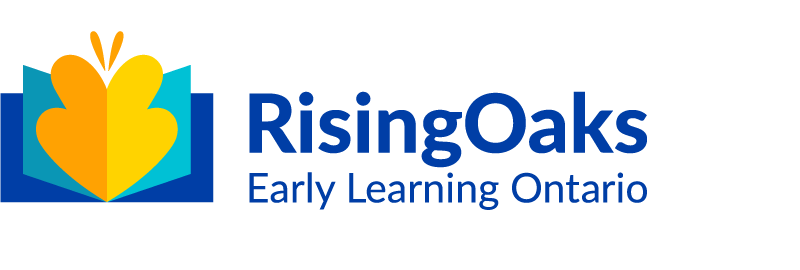“Look at how far that flew!” Forrest shouted as his paper airplane floated across the room. “I wonder how mine will fly with the pencil in there?” Spencer questioned before he threw his. “Wow! That went so fast!” the children cheered.
At another table, Devyn and Charlie were trying to fold their paper airplanes, while Caden, Riggins, and Mateo were researching different ways to fold theirs. This sparked a question: what else could the children fold? How else could they use their fine motor skills to challenge themselves in more ways? Challenging children’s mental concentration and giving them the autonomy to create something they are proud of is important for their overall development.
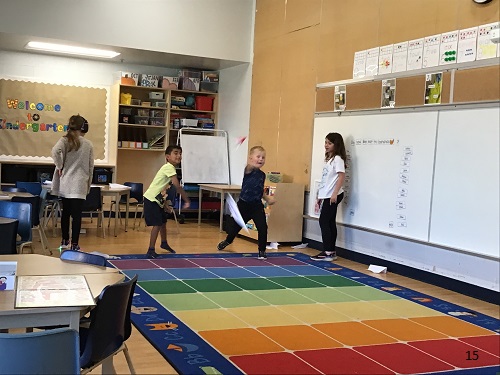
The educators concluded that setting up a table with origami might be the perfect provocation. The children were provided with step-by-step picture and written instructions for simple origami creations. Initially, the educators took a “hands-off” approach, observing as the children created their own origami pieces. The School Age 2 children communicated and worked together to fold their creations. When a child was unsure of a step, they would ask the educator for guidance. Once they figured it out, they shared what they learned with their peers.
“Guys, I just figured out the T-Rex! Wanna make it?” Spencer asked his peers at the origami table. Shouts of “Yes!” were heard. Observing these interactions was wonderful. The children were expressing themselves and “engaging with others to negotiate, collaborate, create, and communicate feelings, ideas, experiences, and knowledge” (HDLH 2014, p. 37). The foundation of expression was blossoming in the School Age 2 classroom.
How can educators continue to foster these peer interactions? Perhaps by continuing to implement activities that hone each child’s individual skills and allowing them to share their knowledge with one another.
After a few days of learning new origami folds, the children were observed creating their own bowls. “It looks like it’s for McDonald’s fries!” Marianna exclaimed. “I have an idea!” Autumn said as she walked over to the snack table with her new bowl and sat down. She proceeded to fill her bowl with pretzel snacks. Emerson, Marianna, and Devyn joined Autumn at the snack table, filling their bowls and enjoying a conversation together.
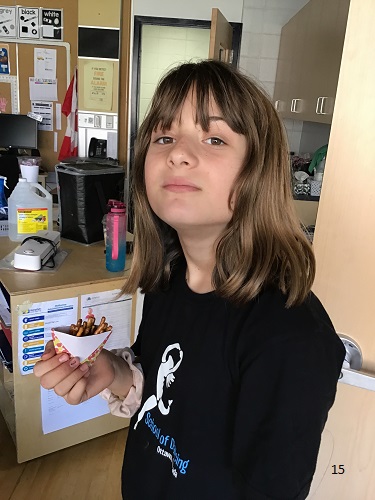
Without fully realizing it, the children had created their own sense of belonging by “expressing a sense of purpose as they participate and make contributions to the program and community” (HDLH 2014, p. 27). Observing these interactions at the snack table led to a reflection: what prompted the children to choose the origami bowl for their snack? What other innovative ideas can be created with something as simple as paper?
After snack, the children returned to the origami table and took on the challenge of making a dog’s face. “Oh, don’t forget to fold the ears!” Emerson reminded his peers. “I’m going to draw a tongue on mine!” Devyn smiled. Later, Darcey, the toddler educator, entered the room with three toddlers. Emerson, Marianna, and Autumn proudly handed each toddler a dog face they had created. The toddlers giggled and smiled, but what truly melted hearts was seeing the older children’s bright eyes and smiles as they watched the toddlers’ reactions.
Many of us often think of physical health when considering well-being, but a child’s mental health and autonomy are equally important. These School Age 2 children demonstrated that they “are increasingly able to recognize, value, and respect the unique identity and perspectives of others” (HDLH 2014, p. 33). By making the younger children smile, they showed an understanding of kindness and acceptance.
How amazing is it that children can grasp the importance of kindness? Educators can continue promoting kindness by being positive role models. As the school year is still in its early stages, it is natural that some children remain a little reserved. The educators have focused on engaging with each child, developing relationships, and promoting communication.
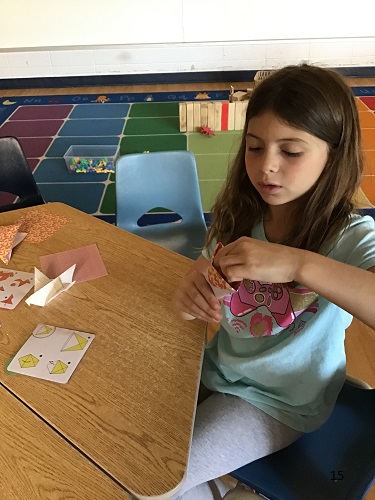
“Can you help me make an infinity cube?” a child asked an educator, sparking joy, as this child and educator had not yet had the chance to connect. As they looked up YouTube videos together to learn how to make the infinity cube, a few other children joined in. Observing the child accept others into his play was a wonderful sight. By “participating in meaningful interaction and communication with peers and adults, regardless of their abilities” (HDLH 2014, p. 43), the children continued to build the foundation of expression, not only with the educators but with each other.
How can educators create a safe space for children to express themselves? By allowing children to be their true selves and ensuring educators express themselves positively, they can help create such spaces. While observing the children engage, interact, and learn from one another, it became clear that origami had created a positive learning experience. Something as simple as folding paper offered so many benefits. The children cultivated their own sense of the four foundations: belonging, well-being, expression, and engagement. Origami remains a popular choice, and we eagerly anticipate where the next few weeks will take us.
